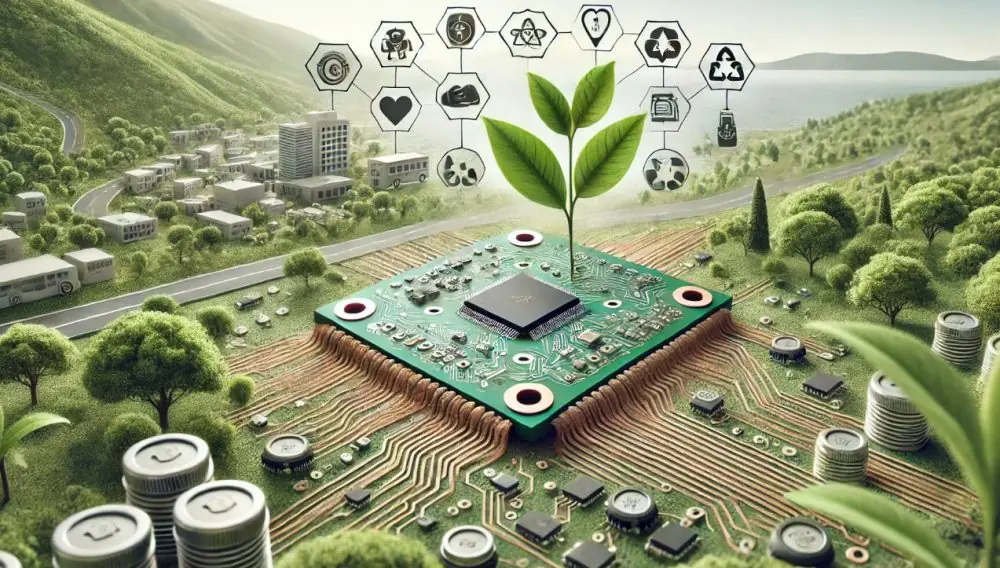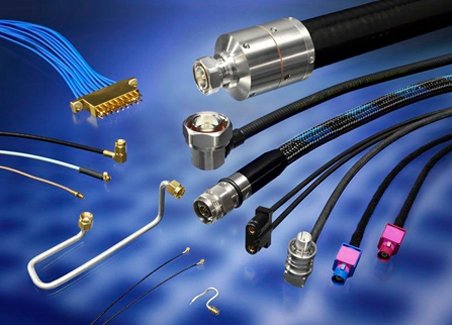Introduction to All-in-One PC PCB Innovation The all-in-one (AIO) PC market has grown rapidly, fueled by demand for sleek, powerful, and space-saving devices. At the heart of these machines lies the printed circuit board (PCB), which integrates critical components like processors, memory, storage, and connectivity modules. Unlike traditional desktops, AIO PCs must balance compactness with high performance, making PCB design a core factor in delivering next-gen computing experiences. Modern PCB engineering isn’t just about connecting circuits—it’s about optimizing energy efficiency, ensuring thermal stability, and maintaining signal integrity in a constrained form factor. This article explores the strategies, materials, and innovations shaping sleek PCB designs for all-in-one PCs. Why Sleek PCB Design Matters in Compact Systems The demand for sleek, space-efficient, and powerful computing solutions has made all-in-one (AIO) PCs one of the most attractive categories in the tech industry. Unlike traditional desktops, which have the luxury of large chassis and multiple dedicated PCBs, AIO systems must condense every essential function into a compact board design. Space Optimization in PCB Layouts In AIO PCs, every millimeter matters. Engineers face the constant challenge of balancing functionality with available space. This involves: By leveraging multilayer PCB technologies, designers can embed power distribution planes, high-speed signal paths, and ground layers within a compact space. Enhancing User Experience with Slim Profiles End users demand thin and lightweight designs without compromising performance. Sleek PCB layouts directly influence how slim an AIO PC can be manufactured. A thinner system not only looks more modern but also: Ultimately, sleek PCB engineering isn’t just a technical necessity—it’s a core driver of market appeal. Core Principles of All-in-One PC PCB Engineering The foundation of a successful AIO PCB lies in the engineering principles that define reliability and performance. Designers must carefully balance power, signal integrity, and thermal performance to ensure smooth operation. Power Distribution and Energy Efficiency Efficient power management is critical. With multiple high-demand components running simultaneously, PCBs must: This ensures components such as CPUs and GPUs receive consistent power delivery without voltage fluctuations. Signal Integrity and High-Speed Data Flow Modern AIO PCs rely heavily on high-speed buses like PCIe, DDR memory, and USB-C. To maintain signal integrity, PCBs employ: Thermal Management and Heat Dissipation Heat buildup is one of the biggest challenges in compact PCBs. Without proper thermal management, performance suffers. Solutions include: By embedding thermal solutions directly within PCB design, manufacturers can minimize reliance on bulky external cooling systems. Advanced Materials Used in Modern PCBs Material science plays a critical role in enabling sleek PCB designs. Traditional FR4 substrates are no longer sufficient for high-speed, high-density AIO PCs. Multilayer PCB Technologies Modern AIO boards often feature 10–20 layers, allowing designers to separate power, signal, and ground planes while maintaining compactness. These multilayer boards support: Flexible and Rigid-Flex PCBs To achieve ultra-thin designs, engineers increasingly use rigid-flex PCBs, combining traditional rigid sections with flexible connectors. Benefits include: Eco-Friendly and Lead-Free Materials With rising environmental concerns, manufacturers are adopting halogen-free laminates, lead-free soldering, and recyclable substrates. Beyond compliance with regulations like RoHS and WEEE, this shift also improves brand reputation among eco-conscious consumers. Design Challenges in All-in-One PC PCB Development Creating PCBs for all-in-one PCs is a balancing act between performance, reliability, and compactness. While innovation has made sleeker designs possible, engineers face multiple technical obstacles that require smart solutions. Balancing Compactness with Performance The most pressing challenge is fitting desktop-class performance into a thin enclosure. Unlike desktops, AIO PCs don’t have room for: This means PCB engineers must: This balance ensures that users enjoy powerful performance while still benefiting from a slim form factor. Minimizing Electromagnetic Interference (EMI) With so many high-speed components placed close together, EMI becomes a significant problem. Poorly managed EMI can cause: To counter this, engineers implement: Durability and Long-Term Reliability All-in-one PCs are expected to last for years under heavy use. Reliability challenges include: To enhance durability, designers use high-Tg laminates (glass transition temperature materials), advanced underfill techniques for solder reinforcement, and thermal cycling tests during quality assurance. Integration of Key Components on PCB Unlike desktops, which distribute tasks across multiple boards, AIO PCs integrate almost everything on a single or minimal set of PCBs. This requires precision engineering for optimal placement. CPU and GPU Placement Strategies The CPU and GPU are the heart of performance. Engineers must ensure: Memory and Storage Integration Memory and storage require high-speed, stable connections. Integration strategies include: Connectivity Modules: WiFi, Bluetooth, and Ethernet Connectivity is critical for modern users. Engineers integrate modules directly onto PCBs using: By handling connectivity at the PCB level, manufacturers reduce the need for bulky external cards or dongles. Manufacturing Innovations for All-in-One PC PCBs Manufacturing sleek PCBs for AIO systems requires state-of-the-art production methods that go beyond traditional assembly lines. Automation in PCB Assembly Modern factories use robotic pick-and-place machines capable of positioning thousands of components per hour with microscopic precision. Benefits include: Quality Control and Testing Methods Since AIO PCBs handle multiple critical functions, testing is essential. Methods include: These innovations ensure that each PCB delivers long-term stability and performance before leaving the factory. Role of AI and Simulation Tools in PCB Design In recent years, artificial intelligence (AI) and simulation technologies have revolutionized PCB design for all-in-one PCs. As systems become more compact, manual trial-and-error methods are no longer sufficient. AI-powered platforms now assist engineers in: Simulation tools such as ANSYS, Cadence, and Altium Designer allow engineers to model entire PCB environments virtually. This not only reduces costs but also accelerates time-to-market by minimizing prototype iterations. By combining AI with simulation, PCB designers create smarter, more reliable boards that meet the demands of slim yet powerful AIO PCs. Cost-Effective Approaches Without Sacrificing Quality Designing sleek PCBs for AIO PCs can quickly become expensive due to the complexity of multilayer boards, premium laminates, and advanced manufacturing methods. However, cost can be controlled with the right strategies. Strategies for Cost Reduction Balancing Quality and Affordability While cost-saving is important, compromising on material quality or testing can lead to reliability issues. AIO
Edit Content
Our expertly engineered manufacturing services lay the foundation for smarter devices and seamless integration. Trust Kenoxis Technologies to deliver efficiency, reliability, and scalability every step of the way. Our team comprises experienced engineers, product designers, quality inspectors, and R&D specialists, all working in unison to bring innovative ideas to life.
Get in Touch
Contact Us
Email address
support@kenoxistechnologies.com
Phone Number
+1 855-673-5515
Office Address
1639 Western Park CT,
Dallas, Texas 75211, USA







